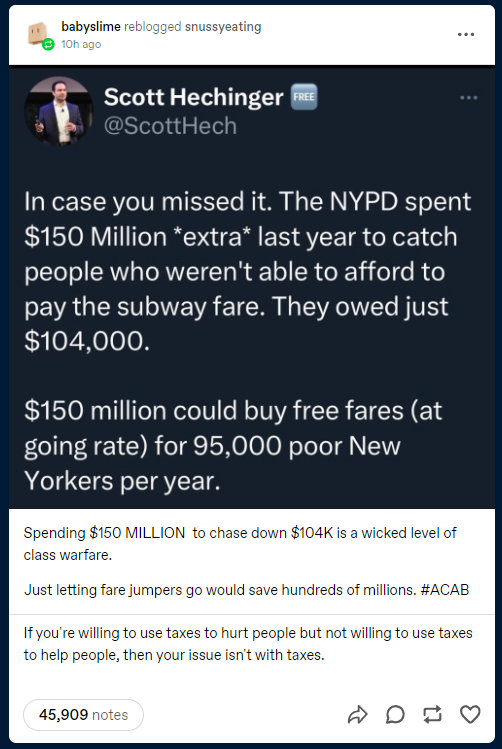this post was submitted on 14 Feb 2024
1575 points (97.1% liked)
tumblr
3441 readers
1045 users here now
Welcome to /c/tumblr, a place for all your tumblr screenshots and news.
Our Rules:
-
Keep it civil. We're all people here. Be respectful to one another.
-
No sexism, racism, homophobia, transphobia or any other flavor of bigotry. I should not need to explain this one.
-
Must be tumblr related. This one is kind of a given.
-
Try not to repost anything posted within the past month. Beyond that, go for it. Not everyone is on every site all the time.
-
No unnecessary negativity. Just because you don't like a thing doesn't mean that you need to spend the entire comment section complaining about said thing. Just downvote and move on.
Sister Communities:
-
/c/TenForward@lemmy.world - Star Trek chat, memes and shitposts
-
/c/Memes@lemmy.world - General memes
founded 1 year ago
MODERATORS
you are viewing a single comment's thread
view the rest of the comments
view the rest of the comments

This is so serendipitous, but the same day this post hit Lemmy, a Hidden Brain podcast episode titled "Broken Windows" started playing. The topic of this podcast hits home pretty hard with regards to how the NYPD managed transit fares in this story.
Broken Windows refers to a theory proposed in 1982 following the eponymously titled experiment. In this experiment, researchers placed 2 cars near the same area in Palo Alto, California and watched to see what happened. One of the cars was new, while the other was poorly maintained and old. Both were left unlocked.
The public started interacting with the old car, opening it, stealing from it, and eventually trashing it. The new car was left intact.
That was until the experiment's author broke the window of the new car. People started noticing that this car wasn't so new or maintained, and they started to steal from and vandalize it too.
This Broken Windows theory led to a lot of police reform in the ensuing 80s and 90s, to the point where Rudy Giuliani picked up the theory so his NYPD could follow it.
The idea is that where disorder lies in society, those bad actors who seed more disorder tend to go. Ironically this Hidden Brain episode also talks about rider fares like this article.
So, even though disadvantaged people may skip the fare for a public good out of dire need or poor life circumstances, the thinking is that intentionally chaotic people definitely skip the fare and seek it out. The idea is to catch bad actors who have other, larger crimes registered on their profile by focusing on the smaller ones.
I'm wondering if, in your calculus here, if you might include the offset damage done to society if more bad actors are caught in initiatives like this. Food for thought.